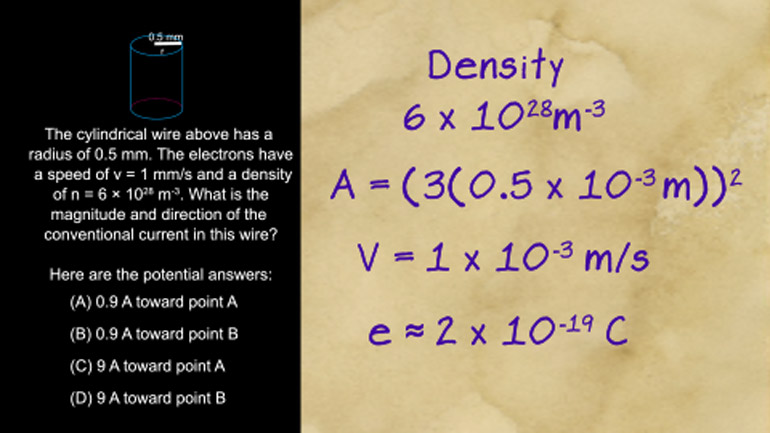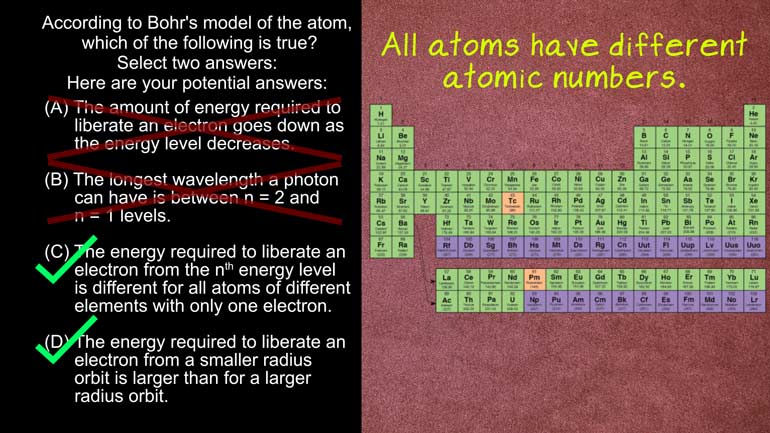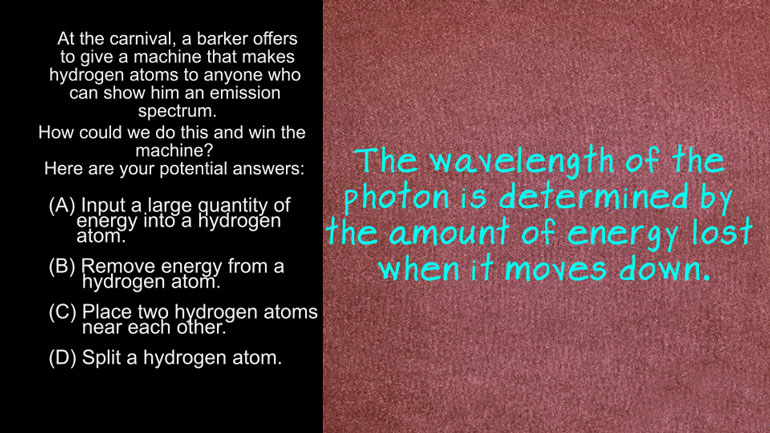ShmoopTube
Where Monty Python meets your 10th grade teacher.
Search Thousands of Shmoop Videos
AP Physics 2: 1.3 Changes and Conservation Laws 11 Views
Share It!
Description:
AP Physics 2: 1.3 Changes and Conservation Laws. To what temperature does the aluminum sheet need to be heated in order for the square peg to fit through the hole?
Transcript
- 00:04
And here's your shmoop du jour brought to you by square pegs and
- 00:06
round holes some days we feel like an octagonal peg in a world of triangular [Man trying to fit octagonal shape in triangular hole]
- 00:10
holes, well those are usually days when we've gotten a lot of geometry homework
- 00:14
The following may be useful information here we go the linear coefficient of aluminum
- 00:19
is 23 times 10 to the negative 6 centimeters per degree celsius the
Full Transcript
- 00:24
linear coefficient of iron is 11.8 times 10 to the negative 6 centimeters per [Aluminum and iron linear coefficiencies]
- 00:29
degree celsius according to a common expression square pegs can't fit into
- 00:33
round holes however it doesn't take thermal expansion coefficients into [Man points to thermal expansion coefficient]
- 00:38
account. Well a square iron peg has sides of two times square root of two
- 00:42
centimeters and needs to pass through an aluminum sheet with a round hole of [Square block of aluminum and a metal sheet]
- 00:47
diameter 3.99 centimeters both objects are initially 20 degrees Celsius...To what
- 00:54
temperature does the aluminum sheet need to be heated in order for the square peg
- 00:58
to fit through the hole and here are the potential answers... All right well this
- 01:04
question really speaks to our attitude whenever taking on a DIY project if [Woman doing DIY project]
- 01:09
something doesn't fit beat it into shape or in this case, heat it into shape
- 01:16
alright which may be why everything we build falls apart after about five [Color block tower falls down]
- 01:20
minutes first of all we need to know how much bigger this hole needs to be the
- 01:24
dimensions of the peg will remain the same and the widest part of the peg will
- 01:27
be the diagonal the minimum diameter of a whole. To find the length of the
- 01:31
diagonal we multiply the length of one side times the square root of two which [Formula for length of diagonal]
- 01:36
gives us a diagonal of four centimeters that means the diameter the hole has to
- 01:40
increase by point 01 centimeters an equation for linear thermal expansion is
- 01:45
the change in length equals the product of the linear coefficient the original
- 01:50
length and the change in temperature so we need to find the change in [Thermometer increases]
- 01:54
temperature that equals the point 0 1 centimeter change in length we can
- 01:58
rearrange the equation to solve for the change in temperature and plug in our [A plug and a light bulb switches on]
- 02:02
numbers we were given a linear coefficient for
- 02:05
aluminum at the start which is 23 times 10 to the negative 6 centimeters per
- 02:08
degree celsius we'll round that down to 20 to make it a little easier and we'll
- 02:12
round the diameter of the hole up to 4 centimeters now let's solve this thing [Person solving a rubiks cube]
- 02:16
the change in temperature equals the change in length over the coefficient
- 02:20
times the starting length that means point 01 centimeters over 20 times 10
- 02:25
to the negative 6 degrees Celsius times 4 centimeters when we do the math we
- 02:30
find that the change in temperature equals 125 degrees Celsius since the [Aluminum block and thermometer rising in temperature]
- 02:34
starting temp was 20 degrees the final temp needed for this peg to fit is 145
- 02:40
degrees Celsius which means our answer is none of the options match 145 degrees
- 02:46
but remember we ballparked the number on the linear coefficient since we made the [linear coefficients on a ball park]
- 02:50
denominator a little smaller our result was a little bigger than it should have
- 02:54
been the only answer close to 145 degrees 129 degrees and we can be
- 02:58
confident that B is the correct choice and remember if you're in a situation
- 03:02
like this trust physics to make it work don't just brute force it that's [girl wearing a face mask using a blow torch]
- 03:06
assuming you have a blowtorch handy if not, just grab a hammer and well go
- 03:11
nuts... [woman hammering an aluminum block]
Up Next
Related Videos
AP Physics 2: 1.1 Properties of Objects and Systems. What is the magnitude and direction of the conventional current in this wire?
AP Physics 2: 1.5 Properties of Objects and Systems. According to the Bohr's model of the atom, which of the following are true?
AP Physics 2: 2.2 Properties of Objects and Systems. What will happen as the robot son moves the sponge near (but doesn't touch) the plate?
AP Physics 2: 2.4 Properties of Objects and Systems. How could you show the carnival barker an emission spectrum?




